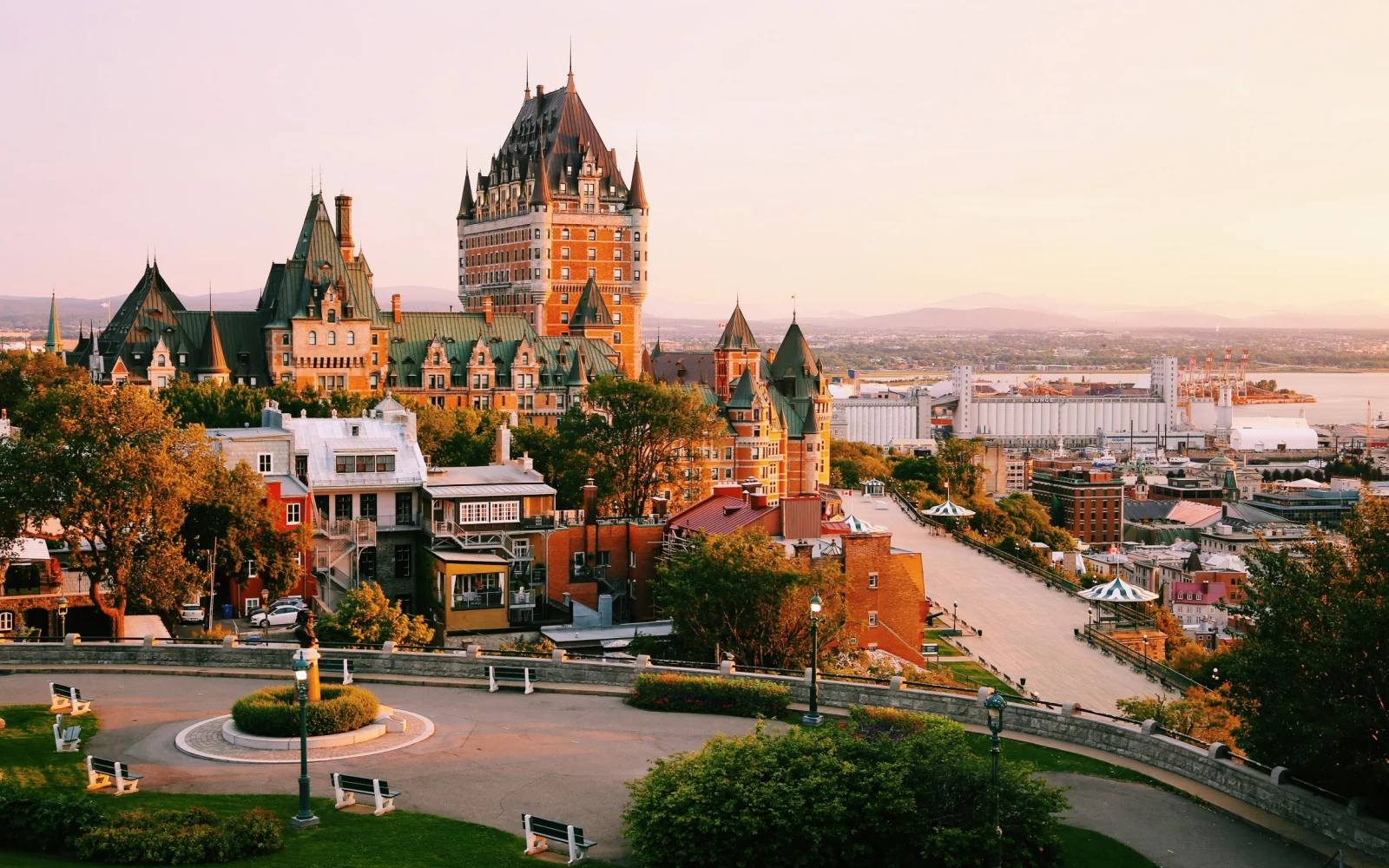What's the best time to visit Quebec City?
The best time to visit Quebec City is in summer (June-August) for warm, festival-filled days or in winter (December-February) for snowy festivities like the Carnaval de Quebec. Summers offer pleasant 77-degree weather ideal for exploring outdoors, while winters provide a festive atmosphere with the renowned Carnaval, despite cold temperatures around 18 degrees Fahrenheit.
Canada’s Quebec City a place you can go to experience old world charm without crossing the Atlantic Ocean from North America. Founded by the French, the city has a historic center dating back to the 17th century.
Stroll through Old Quebec, a UNESCO-protected site, for a dose of history and francophone culture. It’s also a great base for exploring the natural beauty of the surrounding countryside, so make time for day trips to natural wonders such as Montmorency Falls or Jacques-Cartier National Park.
The city is always beautiful, but since it’s located so far north, its climate can get quite extreme. But don’t worry — we’ll show you how to navigate the challenging climate by picking the best time to visit below; let us be your guide!
Overall Best Time to Visit Quebec City
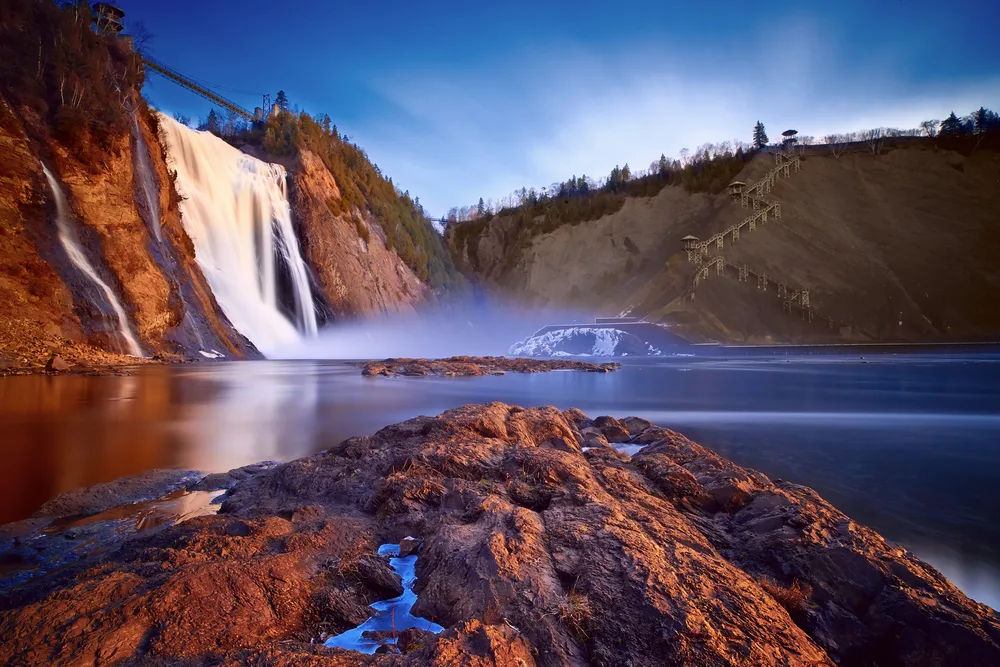
Magnus L/Shutterstock
The best time to visit Quebec City is either the summer (June-August) or the winter (December-February). It depends on whether you want to enjoy a winter wonderland or warm weather.
The city experiences drastic differences between seasons because of its northern location. Many people are pleasantly surprised to find that summers are warm and pleasant.
In July, average daily high temperatures are around 77 degrees Fahrenheit (25 degrees Celsius). It can sometimes get hotter if there is a heatwave, but most days are pleasantly warm but not sweltering.
This is perfect weather for exploring the beautiful nature that surrounds the city. There’s no better season to lazily row down the St. Lawrence River, or to go hiking in Jacques-Cartier National Park.
The city is also at its liveliest in the summer as locals and tourists alike take advantage of the all-too-brief summer. The terraces are packed with people basking in the sun with an al fresco drink or meal. Summer is also when most of the city’s festivals take place.
Quebec City is famous in Canada for its hedonistic atmosphere, and people from all over flock to top events such as:
- Kwe!, a celebration of Quebec’s indigenous people and their culture (June)
- Saint-Jean-Baptiste Day, Quebec’s national holiday (June 24th)
- Festival d’Été (July)
- Les Fêtes de la Nouvelle France (August)
Other people prefer to visit in the winter. Seeing Quebec City covered in snow is a must-see experience, and winter is when you can experience more of the attractions that make the city so unique.
Be warned that winter in Quebec City is very cold, colder than in Montreal or Toronto. Average high temperatures in January are 18 degrees Fahrenheit (-8 degrees Celsius), while low temperatures are around 0 degrees Fahrenheit.
However, the reason to visit in the winter is to see what happens when people don’t flee cold weather but embrace it. Winter is a non-stop party in the city, starting with Christmas festivities in December and continuing with activities such as skiing, ice skating, and tobogganing.
The biggest event in winter is the Carnaval de Quebec, an outdoor festival celebrating winter that happens in January or February (exact dates vary depending on the year).
No matter how cold it is, participants and visitors head outdoors to enjoy snow sculptures, parades, endurance activities in the cold snow, and the world-famous Ice Palace.
Cheapest Time to Visit Quebec City
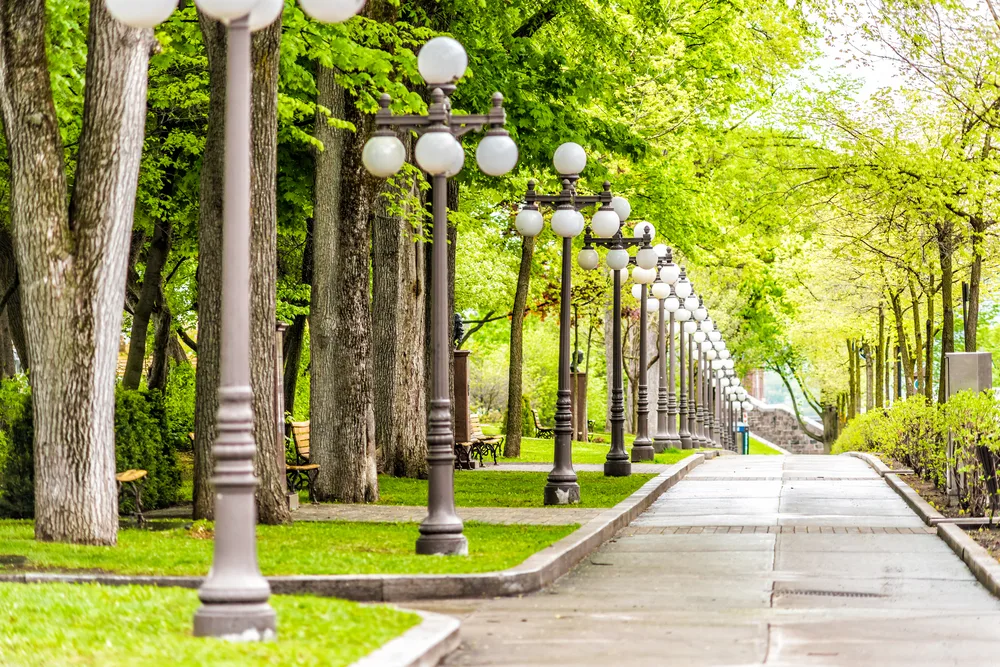
Andriy Blokhin/Shutterstock
The cheapest time to visit Quebec City is in late fall (November) or early spring (April), when there is less demand for accommodation. Late fall and early spring are transitional periods.
In November, the fall foliage has fallen off the trees already, but winter hasn’t fully started yet. Average temperatures are at most 37 degrees Fahrenheit.
Towards the end of the month, Christmas decorations go up, but it’s not the holiday season yet. You get a bit of a sneak preview of Quebec City’s winter charms. November is the least expensive time to visit because the winter high season hasn’t started yet.
You can find hotel rates discounted by as much as 45-50% compared to peak-season rates. You can also find decent discounts on flights to Quebec City or the bigger Montreal airport during this month.
April is also a decent time to travel for bargains. The weather is very unpredictable, and the landscape is a bit messy as Canada transitions from winter to spring. Expect average temperatures of around 46 degrees Fahrenheit and plenty of melting snow.
The hotel rates in April aren’t quite as affordable as in November, but you can still find decent discounts of 20-30%.
Just make sure you aren’t traveling during Easter weekend, when hotel rates tend to increase. Spring is the most affordable time to fly, and the best flight deals are usually in April and early May.
Least Busy Time to Visit Quebec City
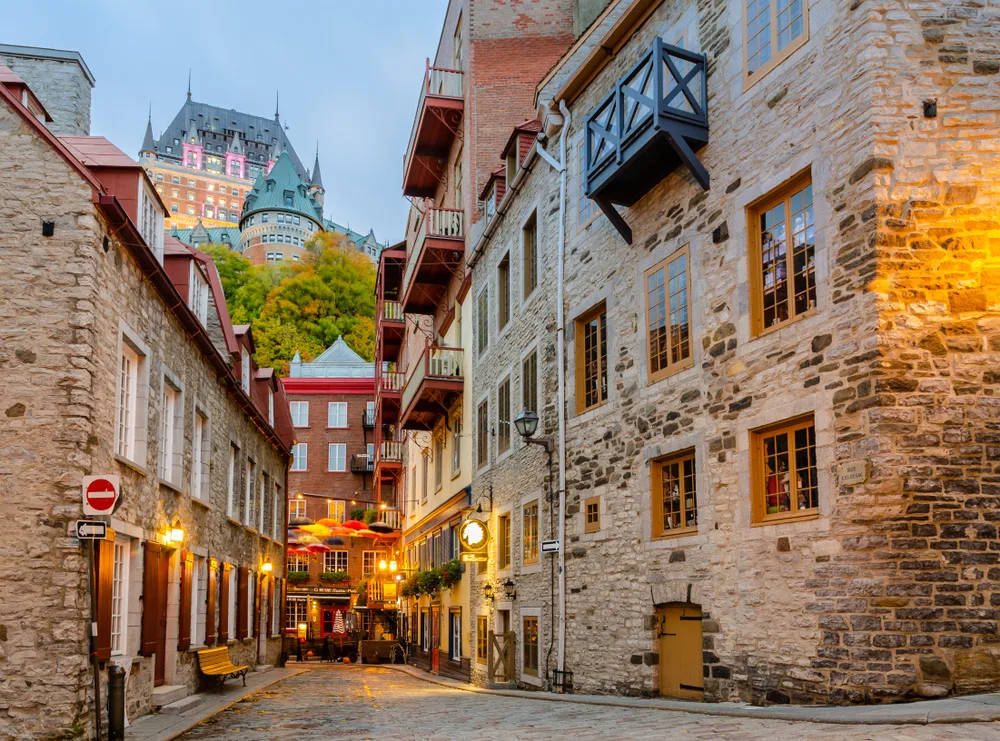
Nicepix/Shutterstock
The least busy time to visit Quebec City is the fall, which brings a world of hidden gems to the streets of the city. Fall is a transitional period in Quebec City. After Labor Day, most of the summer visitors head home, but winter hasn’t started yet.
There is a lull in crowds lasting from September to November, during which you can stroll through the narrow streets of the historic center without bumping into other visitors and enjoy leisurely restaurant meals without other visitors looking longingly at your table.
The weather is cooler, with average high temperatures in October dropping to an average high of 52 degrees Fahrenheit.
You will need to wear some extra layers, but this is the best time to go hiking in the many natural areas around the city. You can admire the fall foliage and go on wildlife spotting tours that allow you to see some of Canada’s most iconic animals up close.
There aren’t as many festivals come fall, although there are plenty of events and decorations for Halloween. However, this may be a good thing since fewer festivals also mean fewer crowds.
There’s also not as much of a need for festivals since the regular cultural calendar is starting back up again. Fall is a great time to see a gallery opening or other cultural event.
Worst Time to Visit Quebec City
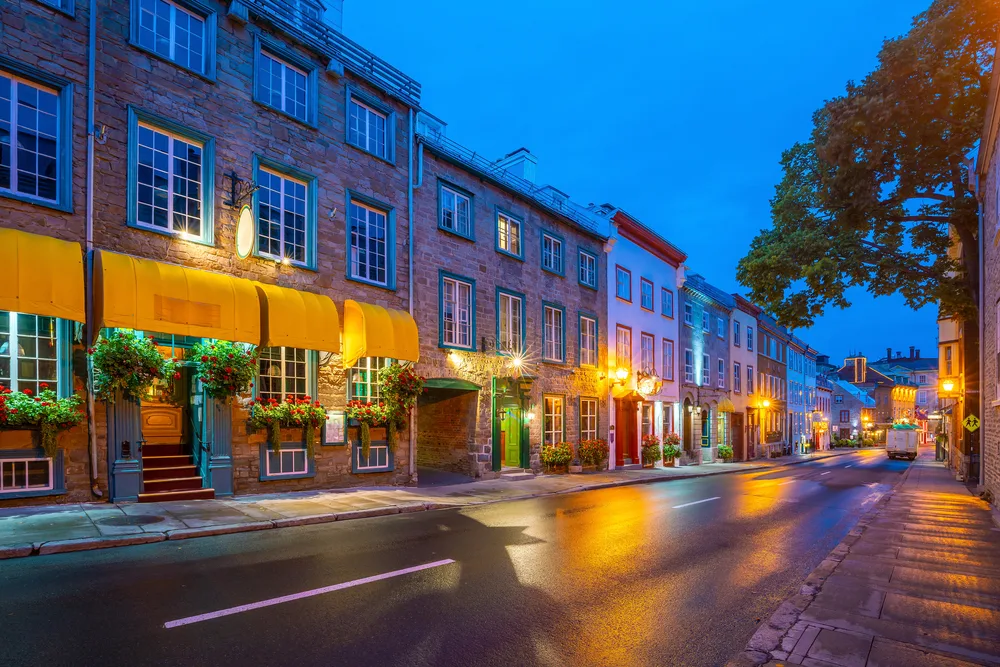
f11photo/Shutterstock
The worst time to visit Quebec City is in the spring, as the weather is quite messy, but there are things to do all the same. Spring (April-May) doesn’t fully set in this far north for a while.
Temperatures are chilly, at most 46 degrees Fahrenheit well into April. It’s too cold to really enjoy being outdoors, but too warm to enjoy winter activities such as skiing. The snow has started to melt, meaning that trails and streets are soggy.
That’s before we even talk about the constant spring rains. Spring in Quebec City isn’t all bad. Early spring is maple season, making April the perfect month to head to a traditional sugar shack, see how maple syrup is made, and sample some sweet treats.
Although summer is listed in guidebooks as one of the best times to visit Quebec City, it’s not for everyone. June, July, and August can get very crowded, so if you don’t like crowds, summer is the worst time to visit.
Quebec City by Month: Climate & Activities
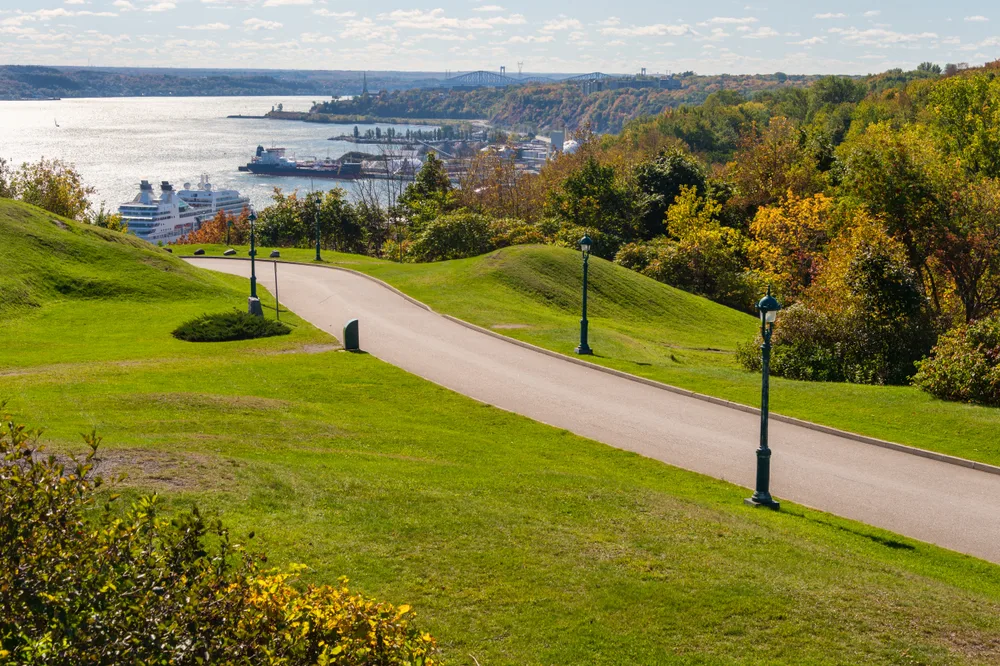
Marc Bruxelle/Shutterstock
Still unsure about the best time to visit Quebec City? Take a look at our summary of the weather and climate by month below:
January
January in Quebec City, often with temperatures from 0 to 18°F (-18 to -8°C), is a winter wonderland. It’s the perfect time to experience the magical Winter Carnival, skate at Place D’Youville, and explore the historic Old Quebec under a blanket of snow.
February
February continues with the charm of winter, ideal for snowy walks along the Terrasse Dufferin, visiting the majestic Ice Hotel, and enjoying traditional Quebecois cuisine in cozy, warm bistros.
March
As winter gradually fades, March temperatures range from 10 to 32°F (-12 to 0°C). This month is great for late-season skiing at nearby Mont-Sainte-Anne, attending the Québec City International Festival of Military Bands, and exploring the Musée de la civilisation.
April
April’s milder weather, with temperatures between 30 to 48°F (-1 to 9°C), beckons for strolling through the Quartier Petit Champlain, visiting the Montmorency Falls, and enjoying the city’s vibrant art galleries.
May
May brings warmer days, from 43 to 63°F (6 to 17°C), perfect for picnics in the Plains of Abraham, exploring the historic Île d’Orléans, and enjoying the blooming gardens at the Parc du Bois-de-Coulonge.
June
June, welcoming summer with temperatures between 53 to 73°F (12 to 23°C), offers ideal conditions for cruising on the Saint Lawrence River, exploring the Festival d’été de Québec, and enjoying outdoor dining in the city’s charming cafes.
July
July’s warmth, ranging from 59 to 77°F (15 to 25°C), is all about attending the lively music and arts festivals, exploring the historic Fortifications of Quebec, and enjoying the vibrant atmosphere of the Petit Champlain district.
August
In August, with temperatures of 58 to 75°F (14 to 24°C), visit the traditional Huron-Wendat Village to learn about Indigenous culture, explore the bustling Marché du Vieux-Port for local produce, and take part in the New France Festival.
September
Welcoming fall, September, with temperatures from 50 to 68°F (10 to 20°C), is perfect for experiencing the colorful fall foliage, visiting the Musée national des beaux-arts du Québec, and enjoying the Québec City Film Festival.
October
October’s cooler days, from 38 to 55°F (3 to 13°C), are ideal for exploring the charming Île d’Orléans, tasting the local apple ciders and cheeses, and taking part in Halloween-themed events in the historic city.
November
November, as the air turns crisper, temperatures from 26 to 41°F (-3 to 5°C), is a time for enjoying the indoor attractions like the Aquarium du Québec, exploring the German Christmas Market, and experiencing the city’s cozy restaurants and cafes.
December
December brings a festive and cozy atmosphere, with temperatures ranging from 12 to 28°F (-11 to -2°C). Enjoy the traditional Christmas decorations in Old Quebec, explore the European-style Christmas markets, and celebrate the holiday season in the historic ambiance of this charming city.
Frequently Asked Questions
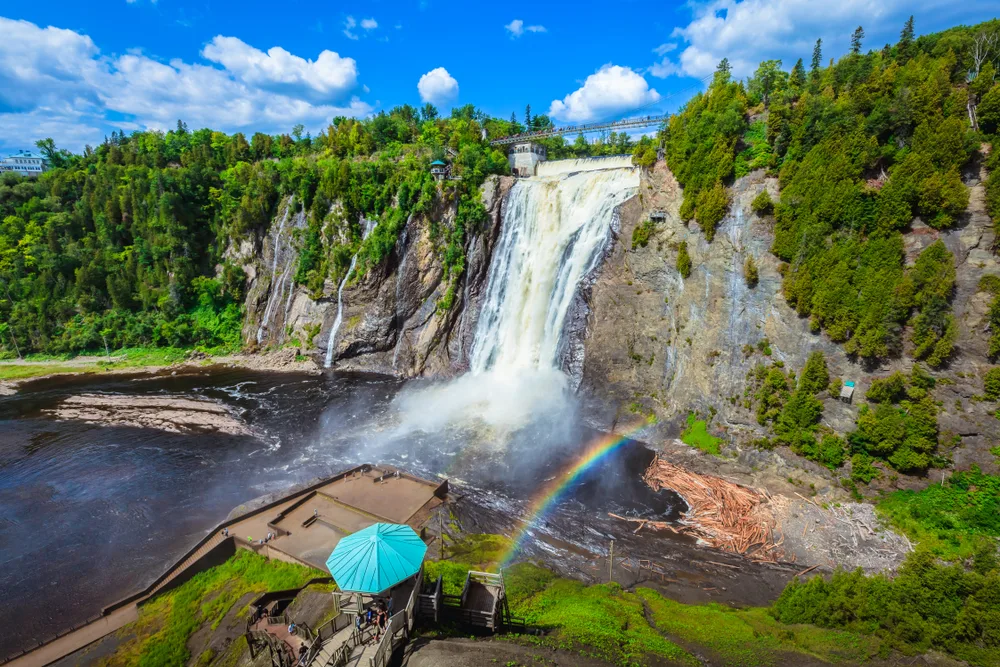
iPix Stock/Shutterstock
Here are a few of the most common questions people have asked about visiting Quebec City:
When is the best month to visit Quebec City?
The best month for warm weather and music festivals is July, while the best month for a winter wonderland is January or February, depending on the date of Carnaval.
How many days do you need in Quebec City?
You should spend at least three days in Quebec City. You want to spend at least one day in the historic center, and at least one day on a day trip into nature.
Is Quebec better in winter or summer?
Winter and summer are so different it’s impossible to say which is better. Summer is better for hiking and enjoying al fresco dining, while winter is better for skiing and enjoying the snow.
Does Quebec have a rainy season?
Quebec doesn’t have a rainy season because it rains (or snows) all year round. April-September are the rainiest months.
When is the off-season in Quebec City?
Quebec City has two off-seasons. Late fall (November) and early spring (April-early May) both have few visitors and lower prices.
So, What’s the Best Time to Visit Quebec City?
The best time to visit Quebec City depends on what you want to do. Summer is better for festivals and hiking, while winter is better for winter sports and the famous Carnaval de Quebec. Fall brings fewer crowds, while spring brings low prices and sugar shacks.
So, with so much to see and to and plenty of amazing times to visit, what are you waiting for — book your trip today and experience for yourself all that Quebec City has to offer. Happy travels!



